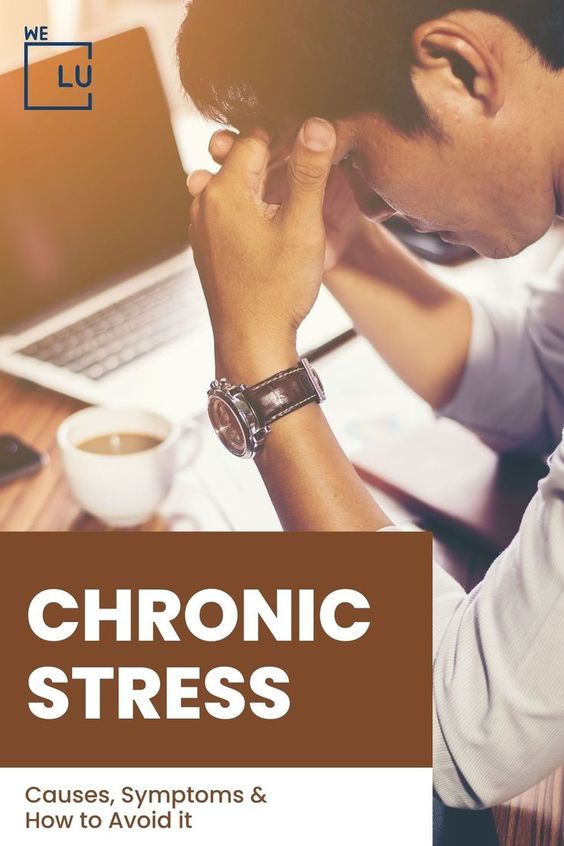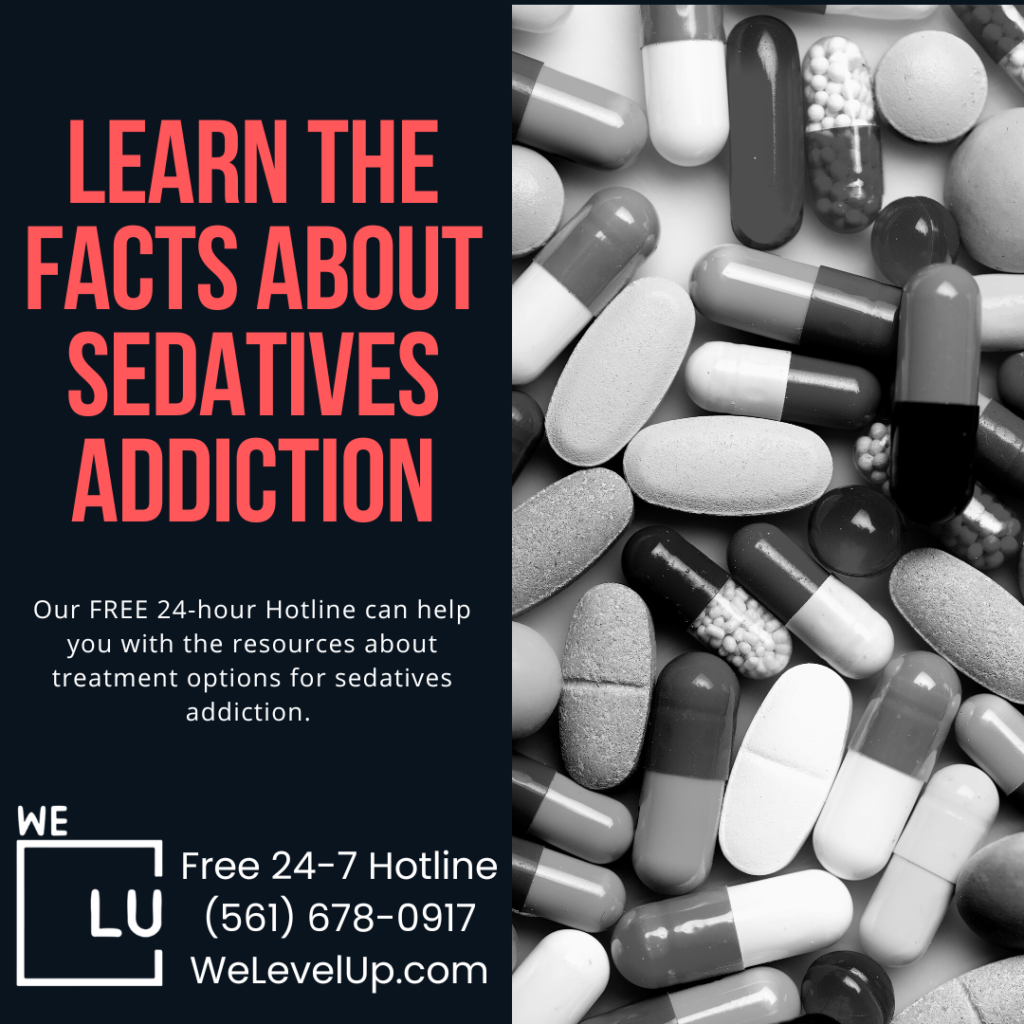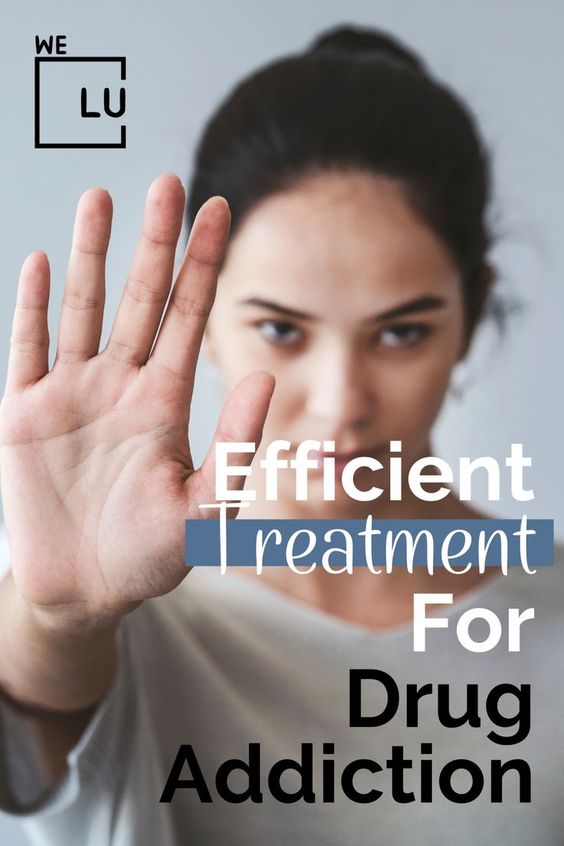What Are Sedatives?
Sedative drugs include benzodiazepines, selective benzodiazepine receptor subtype agonists (z-drugs), barbiturates, and other sleeping pills. These are commonly prescribed for insomnia and other sleep problems and are also used for anxiety disorders, either generalized or panic attacks.
These sedatives are controlled substances due to their potential for misuse and substance abuse. Misuse is often self-medication (chemical coping) of psychological symptoms in ways unauthorized by the prescriber, usually as dose escalation leading to requests for early refills. Sedatives are abused for euphoric effects, which may have dangerous consequences.
What Are Barbiturates?
Barbiturates are classified as sedatives due to their central nervous system depressant and sleep-inducing effects. Primary therapeutic uses of barbiturates are as anesthetic and anticonvulsant medications. Barbiturate abuse — both prescription and illicit — peaked in the 1970s, but by the late 1980s, barbiturates had been largely replaced by benzodiazepine medications for the treatment of anxiety and insomnia due to safety issues.
As the rate of barbiturate prescribing decreased dramatically, so did abuse of barbiturates. Butalbital is a short-acting barbiturate that is combined with caffeine and aspirin (Fiorinal) or acetaminophen (Fioricet) and is commonly prescribed for the treatment of headaches. However, regular use of butalbital can lead to physical dependence and a withdrawal syndrome that starts with headaches, resulting in a vicious cycle of recurrent headaches (medication-rebound headaches) that are only relieved by frequent re-administration of butalbital.
Skip To:
- What Are Sedatives?
- Sedative Fact Sheet
- Sedative Abuse Statistics
- Sedatives Addiction FAQs
- Sedative Side Effects
- Are Sedatives Addictive?
- Addiction To Sedatives
- Sedatives Addiction Signs
- Sedative Addiction Symptoms
- Overdose Of Sedatives
- Sedative Withdrawal
- Treatment For Sedative Addiction
Learn More:
Most of those who abuse barbiturates will also have experience with other sedatives. It is rare for a patient to develop sedatives addiction to barbiturates alone. Abusers will take a variety of available sedatives to treat the unpleasant effects of illicit stimulants, reduce anxiety, or induce euphoric effects. [2]
What are Benzodiazepines?
The most commonly prescribed sedatives are benzodiazepines, which are similar to alcohol in that they facilitate the inhibitory effects of gamma-aminobutyric acid (GABA) at the GABA-A receptor complex, primarily by binding non-selectively to the benzodiazepine subtype 1 (BZ1) and BZ2 receptors. Benzodiazepines are depressants that produce sedation and hypnosis, relieve anxiety and muscle spasms, and reduce seizures. In addition to reducing anxiety and inducing sleep, benzodiazepines can cause euphoria and, therefore, are subject to abuse as recreational drugs.
Are you or somebody you know at serious risk of an overdose because of drug or alcohol abuse? If so, please call 911 right away. There are addiction rehab center addiction hotlines that can help guide you to proper local therapists & facilities.
SAMHSA TREATMENT HELPLINE
Struggling with substance use disorder? SAMHSA’s Addiction Treatment Helpline can connect you with proper help. (844) 597-1011
DRUG or ALCOHOL POISON CONTROL
If you’re experiencing or witnessing a drug- or alcohol-related poisoning, the poison control hotline can help. (844) 597-1011
The most common benzodiazepines are the prescription drugs:
- Valium
- Xanax
- Halcion
- Ativan
- Klonopin
Tolerance can develop, although at variable rates and to different degrees. Shorter-acting benzodiazepines used to manage insomnia include:
- Estazolam (ProSom®)
- Flurazepam (Dalmane®)
- Temazepam (Restoril®)
- Triazolam (Halcion®)

Midazolam (Versed®), a short-acting benzodiazepine is utilized for sedation, anxiety, and amnesia in critical care settings and prior to anesthesia. It is available in the United States as an injectable preparation and as a syrup (primarily for pediatric patients). Benzodiazepines with a longer duration of
action are utilized to treat insomnia in patients with daytime anxiety. These benzodiazepines include:
- Alprazolam (Xanax®)
- Chlordiazepoxide (Librium®)
- Clorazepate (Tranxene®)
- Diazepam (Valium®)
- Halazepam (Paxipam®)
- Lorazepam (Ativan®)
- Oxazepam (Serax®)
- Prazepam (Centrax®)
- Quazepam (Doral®)
- Clonazepam (Klonopin®)
Many different benzodiazepines are prescribed, with different durations of action, rates of onset, and intensities of euphoria.
Gamma-aminobutyric acid (GABA) is a chemical that is made in the brain and is also found in some foods. In the brain, GABA has anti-seizure and anti-anxiety effects. GABA works by blocking brain signals (neurotransmissions).
Z-Drugs (Sleeping Medication)
There are three non-benzodiazepine drugs approved by the U.S. Food and Drug Administration (FDA) for the treatment of insomnia:
- Zaleplon (Sonata)
- Zolpidem (Ambien)
- Eszopiclone (Lunesta)
These sedatives are often called “z-drugs.” They are agonists that bind to the same binding site as benzodiazepines at the GABA-A receptor, but they only act on the BZ1 subtype receptor and, thus, are similar to typical benzodiazepines (i.e., diazepam, alprazolam, and others), even though they are more selective receptor subtype agonists. They possess a shorter duration of action and half-life, do not disturb overall sleep architecture, and cause fewer residual effects during daytime hours, making them more clinically attractive than benzodiazepines.
However, adverse effects such as hallucinations and psychosis have been reported, particularly with zolpidem. Increasing reports of bizarre and complex behavioral effects from z-drugs have prompted regulatory agencies to issue warnings and restrictions on prescribing, dispensing, and using z-drugs.

Get Your Life Back
Find Hope & Recovery. Get Safe Comfortable Detox, Addiction Rehab & Dual Diagnosis High-Quality Care.
Hotline(844) 597-1011Sedative Fact Sheet
Sedatives, which slow down the central nervous system, come in a wide range of strengths. They typically come in pill or liquid form. Despite the fact that sedatives are frequently used medicinally, abusing them can lead to dependence and addiction.
Sedative Physiological Effects
Sedatives often result in physical depression, muscle relaxation, and sedation; however, due to the variety of sedatives, there are a number of additional effects that vary depending on the substance used.
Sedative Addiction Outcome
The following negative effects may result from prolonged sedative use: a tendency to forget things or lose your memory (amnesia) depressive symptoms including exhaustion, hopelessness, or suicidal thoughts. mental health issues like anxiousness.
Sedative Classification
- Depressants or drugs that depress the central nervous system (CNS).
- Tranquilizers.
- Hypnotics.
- Anxiolytics.
- Drugs that reduce anxiety.
Sedative Progesterone Effect
Progesterone, which is also categorized as a neurosteroid, boosts typical brain functions and supports healthy nervous system operation. It enhances memory and reduces anxiety. Progesterone is advised to be taken before night because it has a sedative effect and aids in the restoration of regular sleep patterns.
Sedative Abuse Statistics
Most Common Sedatives
Other medications slow brain activity and have sedating effects using different mechanisms than those that sedatives utilize. These include:
- Opioid drugs
- Alcohol
- General anesthetics
- Muscle relaxants
- Antidepressants
- Antipsychotics
Some examples of these prescription medications include:
- Oxycodone (OxyContin)
- Morphine (Roxanol)
- Baclofen (Lioresal)
- Gamma-hydroxybutyrate (Xyrem)
- Amitriptyline (Elavil)
- Olanzapine (Zyprexa)
Sedatives Addiction FAQs
What Are Some Examples Of Addictive Sedatives?
-Opioid drugs
-Alcohol
-General anesthetics
-Muscle relaxants
-Antidepressants
-Antipsychotics
What Are Some Examples Of Non Addictive Sedatives?
The addictive benzodiazepines can be replaced with SSRIs, SNRIs, buspirone, beta-blockers, pregabalin, gabapentin, hydroxyzine, PanX, and diphenhydramine as treatments for anxiety.
What Are The Signs Of Sedative Dependence?
According to Healthline, Sedatives are a type of prescription medication that slows down your brain activity but it comes with the risk of dependency. Dependency develops when your body becomes physically dependent on the sedative and can’t function normally without it. Dependence can be hard to recognize. The clearest symptom is that you can’t stop thinking about taking the drug.
Sedative addiction is a brain disorder. Your doctor may also be able to recommend an addiction counselor, therapist, or treatment center that can address both the medical and psychiatric effects of addiction.
What Are Common Sedative Abuse Symptoms?
Substance use disorders are defined as a pattern of use that results in marked distress and/or impairment, with two or more of the following symptoms over the course of a 12-month period:
1. Using the substance in larger amounts or over a longer period of time than intended
2. Unsuccessful attempts or a persistent desire to reduce the use
3. Too much time is spent on obtaining, using, and/or recovering from the effects of the substance
4. A strong craving for the substance
5. Significant interference with roles at work, school, or home
6. Continued use despite recurrent social or interpersonal consequences
7. Reducing or giving up important social, occupational, or recreational activities because of the substance use
8. Substance use in situations in which it may be physically hazardous
9. Substance use despite recurrent or persistent physical or psychological consequences
10. Tolerance of the substance
11. Withdrawal from the substance [4]
Sedative Side Effects
Although sedatives have intended clinical effects, they may also cause some adverse short-term side effects, including:
- Difficulties with focus and concentration
- Memory loss
- Slow reaction times
- The impaired depth and distance perception
- An inability to feel pain
- Confusion
- Impaired judgment
- Slurred speech
- Low blood pressure
Long Term Sedation Side Effects
- Anxiety
- Chronic fatigue
- Weight gain
- Depression
- Thoughts of suicide

If you know someone at immediate risk of self-harm, suicide, or hurting another person:
- Ask the tough question: “Are you considering suicide?”
- Listen to the person without judgment
- Call 911 or the local emergency number
- Stay with the person until professional help arrives
- Try to remove any weapons, medications, or other potentially harmful objects
Can Long-Term Sedation Cause Brain Damage?
Yes. According to one study, sedation was associated with in-hospital death. The patients who had received sedation had a longer duration of ventilation, a longer stay in the intensive care unit and in the hospital, and an increased in-hospital mortality rate compared with the patients who did not receive sedation. Compared with daily interruption or light sedation, deep sedation increased in-hospital mortality and decreased the 60-month survival for patients who had received sedation. [3]
Sedation is the administering of a sedative drug to produce a state of calm or sleep. As the amount consumed increases, especially beyond the established tolerance of an individual, progressively more impairment occurs in judgment and brain function. Initial signs include slurred speech, followed by nystagmus, incoordination (especially in complex tasks such as driving), ataxia, and memory impairment (“blackout”). Severe sedative overdose may lead to stupor, and high levels result in suppression of the autonomic respiratory drive and may result in coma or death from anoxic brain injury.
Misuse of prescription psychotherapeutic drugs, including sedatives, is second only to marijuana as the nation’s most prevalent illicit drug use issue. All sedative and hypnotic drugs pose a significant risk of physical and psychological dependence. According to the National Survey on Drug Use and Health (NSDUH), in 2015, an estimated 119.0 million Americans aged 12 or older used prescription psychotherapeutic drugs in the past year, representing 44.5 percent of the population. About 18.6 million of them used sedatives (6.9%).
Are Sedatives Addictive?
Of the 18.6 million past year users of prescription sedatives, 0.6 million were youths aged 12 to 17 (2.4% of youths), 1.3 million were young adults aged 18 to 25 (3.8% of young adults), and 16.6 million were older adults aged 26 or older (8.0% of older adults). Thus, the overall estimate of 6.9% of people aged 12 or older who used sedatives in the past years was driven by use among adults aged 26 or older. [1]
Addiction To Sedatives
The “high” from sedative medications is described as being very similar to alcohol intoxication. Tolerance, dependence, and withdrawal are all reported with sedatives, though these appear to be less severe and with a lower incidence of z-drugs than benzodiazepines or barbiturates. Problems from misuse and abuse of sedatives have continued to grow with time.
Sedatives Addiction Signs
According to Healthline, Sedatives are a type of prescription medication that slows down your brain activity but it comes with the risk of dependency. Dependency develops when your body becomes physically dependent on the sedative and can’t function normally without it. Dependence can be hard to recognize. The clearest symptom is that you can’t stop thinking about taking the drug.
Sedative addiction is a brain disorder. Your doctor may also be able to recommend an addiction counselor, therapist, or treatment center that can address both the medical and psychiatric effects of addiction.
Sedative Addiction Symptoms
Substance use disorders are defined as a pattern of use that results in marked distress and/or impairment, with two or more of the following symptoms over the course of a 12-month period:
- Using the substance in larger amounts or over a longer period of time than intended
- Unsuccessful attempts or a persistent desire to reduce the use
- Too much time is spent on obtaining, using, and/or recovering from the effects of the substance
- A strong craving for the substance
- Significant interference with roles at work, school, or home
- Continued use despite recurrent social or interpersonal consequences
- Reducing or giving up important social, occupational, or recreational activities because of the substance use
- Substance use in situations in which it may be physically hazardous
- Substance use despite recurrent or persistent physical or psychological consequences
- Tolerance of the substance
- Withdrawal from the substance [4]
Psychological Symptoms of Sedatives Addiction
- Anxiety
- Withdrawal
- Mood swings
- Irritability
- Depression
- Paranoia
Physical Symptoms of Sedatives Addiction
- Slurring speech
- Slow or shallow breathing
- Depressed pulse
- Low blood pressure
- Diminished coordination
Non-medical use of sedatives is common. Furthermore, nearly 10% of those with non-medical use meet the criteria for abuse/dependence. Anxiety symptoms associated with non-medical use (panic symptoms) and abuse/dependence (agoraphobia) should alert clinicians to screen for these problems and consider alternate treatment or referral.
People who are suffering from sedative addiction or develop sedative, hypnotic, or anxiolytic use disorder may be at risk for co-occurring disorders. Clinical professionals use the term dual diagnosis to describe the simultaneous presence of more than one disorder. Sedatives addiction has been associated with the following disorders:
- Posttraumatic stress disorder (PTSD)
- Other substance use disorders
- Anxiety disorders
- Schizophrenia
- Depressive disorders
- Bipolar disorder
Failing to receive dual diagnosis treatment can undermine your recovery efforts.
Overdose Of Sedatives
Yes. Long-term use of benzodiazepines can worsen underlying depression and anxiety. A recent study showed that benzodiazepines accounted for nearly 30% of deaths from pharmaceutical agents, and 75% of overdose deaths were unintentional. Another study of zolpidem misuse showed that hospital admission was common when zolpidem was ingested with other medications and resulted in intensive care unit admission in nearly half of cases for hemodynamic instability or prolonged altered mental status.

Sedative Overdose Symptoms
- Changes in alertness
- Coma
- Difficulty thinking
- Drowsiness
- Lack of coordination
- Staggering
- Memory loss
- Poor judgment
- Slow breathing
- Sluggishness
- Slurred speech
Overdose may lead to death and should be treated as a medical emergency. If a person shows any overdose symptoms, 911 should be contacted immediately.
Sedative Withdrawal
Patients who chronically take sedative medications, whether prescribed by a physician or bought on the black market, are at risk for an acute withdrawal syndrome that is clinically indistinguishable from alcohol withdrawal. The severity of withdrawal is affected by concurrent medical illness. Risk factors for severe withdrawal (delirium tremens) include larger amounts of sedatives taken chronically, longer time of use, older age, and comorbid medical or psychiatric problems.
Misuse or abuse of sedatives may lead to intoxication or withdrawal syndrome, either of which may be fatal. Sedative withdrawal syndrome can be avoided by slowly tapering down the dose of the sedative over several weeks. More serious withdrawal is treated by substitution with a long-acting sedative and requires close medical supervision in the outpatient or inpatient setting. After treatment of these consequences, the substance use disorder should be addressed with long-term treatment that involves individual and/or group counseling with the help of sedative addiction treatment professionals.
Treatment For Sedative Addiction
Receive treatment for co-occurring disorders today.
We Level Up treatment center can help with inpatient therapy programs exclusively. Because each client is different and requires unique, comprehensive care according to their situation, our staff of well-trained physicians and nurses first begin the client relationship with a detailed one-on-one assessment.
We Level Up is a multi-faceted primary drug and alcohol dual diagnosis program treating secondary co-occurring mental health conditions and polysubstance abuse. We Level Up team uses evidence-based proven methods to generate cutting-edge solutions to substance abuse and behavioral health challenges. With support programs targeted toward families and individuals. We work to improve the health of the public and of individuals from every behavioral and related integrated addiction primary and mental health secondary treatment option. This includes constant research and innovation on substance abuse and integrated co-occurring mental health treatment models paired with individuals in a conducive environment.
First-class Facilities & Amenities
World-class High-Quality Addiction & Mental Health Rehabilitation Treatment
Rehab Centers TourRenowned Addiction Centers. Serene Private Facilities. Inpatient rehab programs vary.
Addiction Helpline(844) 597-1011Proven recovery success experience, backed by a Team w/ History of:
15+
Years of Unified Experience
100s
5-Star Reviews Across Our Centers
10K
Recovery Success Stories Across Our Network
- Low Patient to Therapist Ratio
- Onsite Medical Detox Center
- Comprehensive Dual-Diagnosis Treatment
- Complimentary Family & Alumni Programs
- Coaching, Recovery & Personal Development Events
Detox for Sedatives Withdrawal
Withdrawal from substances of abuse is an important first step to overcoming your sedatives addiction or drug dependency. However, withdrawal isn’t an effective treatment by itself. You’ll need further treatment and support to help you in the long term. [5]
Often, sedatives can lead to severe withdrawal symptoms. However, proper care and medical supervision will greatly reduce the chances of developing these symptoms and ensure a safe detox process. This means that the individual detoxing will be weaned off of the substance slowly and carefully. Depending on their biology, dosage, and frequency of use, the time it takes to taper off varies but is usually achieved within a few weeks.
The longer and heavier the drinking, the more prolonged and more severe detox will be. For this reason, going through the process sooner than later, and getting help, is critical to recovery.
Once fully admitted and evaluated, the 2nd stage of detox gets underway: stabilization. Based on the data provided during the admissions process, patient feedback, and the symptoms observed; our experienced team of medical addiction professionals will provide care to keep the patient stable and as comfortable as possible. [6]
Programs, services, and treatments vary. We Level Up rehab center offers inpatient substance abuse treatment. Offering co-occurring treatments. We treat the entirety of sedatives addiction and behavioral health disorders including their secondary corresponding illnesses to improve long-term recovery outcomes. Get a free health assessment and find out what treatment options are most suitable for you.
Cognitive Behavioral Therapy
Cognitive-behavioral therapy (CBT) is a widely used treatment for drug abuse and dependence to help individuals identify negative thought patterns, emotions, and problematic behaviors and learn how to make healthy lifestyle changes that decrease the urges to abuse sedatives and use other substances; paying particular attention to symptoms of psychosis, depression, and other co-existing mental health-related problems or dual diagnosis that are exacerbated by stress.
Counseling Services
Individual, group, and family counseling services are offered in the majority of mental health and substance abuse treatment programs to “get to the root of the problems”, improve communications and relationships, and motivate the abuser toward positive changes. . The structured guidance of a counselor helps the patient stay on track and in the right perspectives as they strive to achieve their potentials and goals of recovery.

Increasing awareness of high-risk situations and warning signs and developing avoidance strategies and coping skills for handling those situations is an important part of treatment known as relapse prevention and knowing what to do should relapse occur is equally important to ensure any long-term recovery success.
Our FREE 24-hour Hotline can help you with the resources about treatment options for sedatives addiction. Get a free consultation now for your best-fitting treatment programs along with free rehab insurance verification. Call We Level Up today and speak with one of our addiction specialists to check your rehab insurance coverage and benefits.
Get Help. Get Better. Get Your Life Back.
Searching for Accredited Drug and Alcohol Rehab Centers Near You?
Even if you have failed previously and relapsed, or are in the middle of a difficult crisis, we stand ready to support you. Our trusted behavioral health specialists will not give up on you. When you feel ready or just want someone to speak to about therapy alternatives to change your life call us. Even if we cannot assist you, we will lead you to wherever you can get support. There is no obligation. Call our hotline today.
(844) 597-1011As the sedatives addiction treatment community begins to realize that addiction is itself a mental disorder, the relationship between substance abuse and mental disorders becomes more complicated. The greater treatment community largely lacks a proper understanding of dually diagnosed conditions, so these conditions are still treated separately, or worse–not treated or diagnosed at all. We Level Up dual diagnosis treatment centers in Florida, California, Texas, and New Jersey are some of the facilities that have professionals trained to help treat co-occurring disorders concurrently. This type of tandem treatment provides some of the best success rates.
Get dual diagnosis treatment for individuals struggling with substance abuse and mental health disorders. We Level Up addiction counselors will discuss the average cost of the program based on the personalized treatment that works best for you.
Experience Transformative Recovery at We Level Up Treatment Centers.
See our authentic success stories. Get inspired. Get the help you deserve.
Start a New Life
Begin with a free call to an addiction & behavioral health treatment advisor. Learn more about our dual-diagnosis programs. The We Level Up Treatment Center Network delivers recovery programs that vary by each treatment facility. Call to learn more.
- Personalized Care
- Caring Accountable Staff
- World-class Amenities
- Licensed & Accredited
- Renowned w/ 100s 5-Star Reviews
We’ll Call You
Sources:
[1] Prescription Drug Use and Misuse in the United States: Results from the 2015 National Survey on Drug Use and Health – Substance Abuse and Mental Health Service Administration
[2] Prescription Sedative Misuse and Abuse – National Center for Biotechnology Information
[3] Effect of sedation on short-term and long-term outcomes of critically ill patients with acute respiratory insufficiency – National Center for Biotechnology Information
[4] Sedatives Addiction Signs – Adapted from American Psychiatric Association. Diagnostic and Statistical Manual of Mental Disorders (DSM-5®). Washington, DC: American Psychiatric Publishing; 2013.
[5] Alcohol Misuse – https://www.nhs.uk/conditions/alcohol-misuse/treatment/
[6] Stabilization Treatment Program – We Level Up New Jersey
Barbiturates. (n.d.). – dea.gov/factsheets/barbiturates
Bauer BA, et al. (2018). Herbal treatment for anxiety: Is it effective? – mayoclinic.org/diseases-conditions/generalized-anxiety-disorder/expert-answers/herbal-treatment-for-anxiety/faq-20057945
Bent S, et al. (2006). Valerian for sleep: A systematic review and meta-analysis. DOI: – 10.1016/j.amjmed.2006.02.026
Benzodiazepines. (2013). – deadiversion.usdoj.gov/drug_chem_info/benzo.pdf


